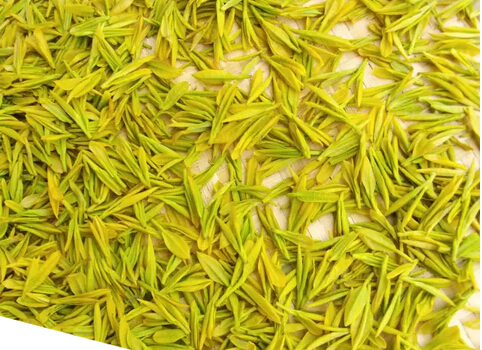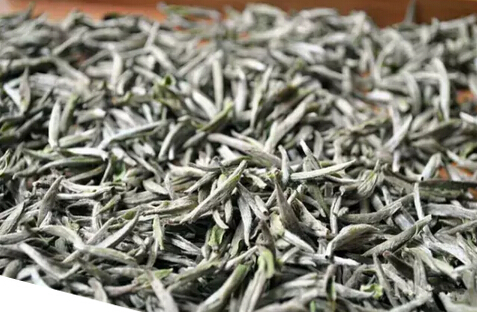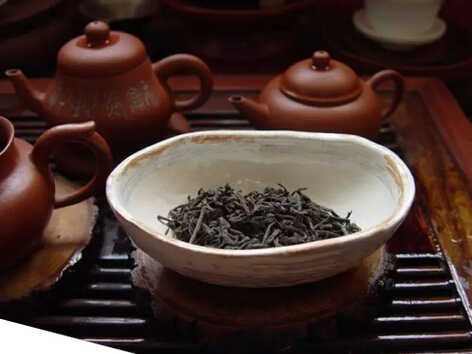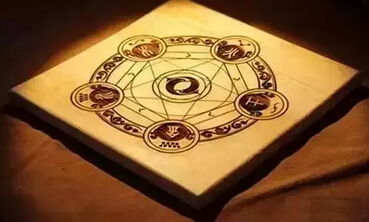
The heavens have the five elements: metal, wood, water, fire, and earth; humans have the five organs: lungs, liver, kidneys, heart, and spleen; and Chinese tea is precisely divided into five colors: white, yellow, black, red, and green. These five colors further give rise to five flavors: pungent, sweet, salty, bitter, and sour. The interplay between the five elements, organs, colors, and flavors forms an intricately linked 'health preservation cycle.'
The secret behind the saying, 'A single leaf of grass can cure a hundred illnesses.'

Tea's health benefits have been documented in many ancient tea and medical texts. The Record of Drinking Tea for Health extols tea's extraordinary qualities: 'How precious is tea! It connects to the divine realms above and nourishes the people below who suffer from dietary imbalances. While other medicines target specific ailments, tea is a cure for all diseases.'
Tea is a sacred and noble substance, capable of reaching the divine heavens above and healing those afflicted by dietary imbalances below. It is a panacea for all ailments. The systematic explanation of tea's miraculous healing properties is based on the ancient Chinese theory of the five elements.
The heavens have the five elements: metal, wood, water, fire, and earth; humans have the five organs: lungs, liver, kidneys, heart, and spleen; and Chinese tea is divided into five colors: white, yellow, black, red, and green. These five colors further give rise to five flavors: pungent, sweet, salty, bitter, and sour. The interplay between the five elements, organs, colors, and flavors forms an intricately linked 'health preservation cycle.'
The Yellow Emperor's Classic of Internal Medicine long ago pointed out that green corresponds to wood and the liver; red corresponds to fire and the heart; yellow corresponds to earth and the spleen; white corresponds to metal and the lungs; and black corresponds to water and the kidneys.
The Book of Nourishing the Elderly by Chen Zhi of the Song Dynasty also records: 'Among the countless edible plants and animals, their five energies, five flavors, cold and hot properties, and tonifying or purging effects all follow the principles of yin-yang and the five elements. They are no different from medicine. If one understands the nature of food and adjusts its use accordingly, it can be far more effective than medicine. A skilled physician is not as good as a skilled dietitian.' Any method, theory, or consumable related to health preservation can be interpreted through the ancient theory of the five elements and elevated to a higher level. Tea is no exception.
Chinese tea is classified into six categories: black tea, white tea, red tea, green tea, yellow tea, and oolong tea. Among these, oolong tea is a subset of green tea, called 'qing' (green) because it contains hints of red within its green, symbolizing wood containing fire. Premium varieties like Tieguanyin and Wulong are nationally renowned and are separately classified as oolong tea, reflecting the Chinese people's particular fondness for them.
Thus, Chinese tea essentially consists of five colors: green, red, yellow, white, and black. The five colors of tea can nourish the five organs, achieving the ultimate goal of restoring health. By harmonizing the five elements' mutual generation and restraint, the balance of heaven and earth is realized—this is the true essence of tea's health-preserving properties.

1. Green Tea
Green tea is unfermented, with clear broth and green leaves. In China, green tea has the highest production, the most varieties, and the widest consumption. Representative varieties include Hangzhou Longjing, Huangshan Maofeng, Dongting Biluochun, and Taishan Nü'er Tea.
Green tea corresponds to the wood element, with a sour taste and a fresh aroma. It enters the liver meridian, and since the liver governs blood, green tea can improve eyesight, purify the blood, and reduce blood clots. It is best consumed in spring to dispel wind-heat, reduce inflammation, and clear internal heat.
Traditional Chinese health preservation holds that spring is the season of growth, associated with wind, the wood element, the liver organ, and the color green. After a winter of storage and closure, the body's accumulated cold and pathogenic energy needs to be released in spring. Many people suffer from diseases caused by liver yang rising excessively, making high-aroma green tea ideal. Green tea refreshes the mind, uplifts the mood, reduces drowsiness, and clears the heart. Drinking green tea in spring, with its color supplementing the season, can dispel wind-heat, calm the liver, improve eyesight, reduce inflammation, and alleviate pain.

2. Red Tea
Red tea is fully fermented, characterized by a red broth, red leaves, and a sweet, mellow flavor. Keemun Black Tea is a representative variety.
Red tea corresponds to the fire element, with a bitter taste and a toasty aroma. It enters the heart meridian and connects to the small intestine meridian, warming the middle and reducing the risk of heart disease. It is best consumed in summer to cool the body, relieve heat, refresh the mind, strengthen the heart, and promote fluid production.
Summer is the season of flourishing growth, associated with heat, the fire element, the heart organ, and the color red. The intense sun and long days deplete bodily fluids, leading to deficiencies in qi and blood, palpitations, and irritability. Red tea, with its warming nature, harmonizes with the season, cooling the body, refreshing the mind, strengthening the heart, and promoting fluid production.

3. Yellow Tea
Yellow tea is lightly fermented, with yellow leaves and broth, tender buds, and a fresh, mellow aroma. Its yellow color results from a unique 'smothering and yellowing' process during production. Yellow tea is further divided into yellow bud tea, yellow small tea, and yellow large tea. Representative varieties include Junshan Yinzhen, Mengding Huangya, and Huoshan Huangya.
Yellow tea corresponds to the earth element, with a sweet taste and a fragrant aroma. It enters the spleen meridian and connects to the stomach meridian, aiding digestion and regulating the spleen and stomach. It is best consumed during the transitional period between summer and autumn (known as 'long summer') to strengthen the spleen and stomach.
Long summer is a minor season within the four seasons, spanning 30 days from the Minor Heat to the Beginning of Autumn. This season is dominated by dampness, corresponding to the earth element, the spleen organ, and the color yellow. The spleen, warmed by heart yang, controls water. If overwhelmed by damp-heat, it fails to regulate water, leading to loose stools and digestive issues. Drinking yellow tea during this season warms heart yang and stabilizes spleen earth. In Dream of the Red Chamber, Chapter 41, Miao Yu brews Junshan Yinzhen tea to help Grandmother Jia recover from overeating, showcasing yellow tea's digestive benefits.

4. White Tea
White tea is lightly fermented, covered with white hairs, and named for its silver-white appearance. Its broth is light and bright. Fujian White Hair Silver Needle is a representative variety.
White tea corresponds to the metal element, with a pungent taste and a fresh aroma. It enters the lung meridian and connects to the large intestine meridian. Since the lungs govern the skin and pores, white tea can expel toxins and dissipate heat. It is best consumed in autumn to reduce internal heat, relieve dryness, and cleanse the intestines.
Autumn is the season of harvest, associated with dryness, the metal element, the lung organ, and the color white. The withering of nature often causes dry mouth and throat, predisposing people to respiratory diseases. White tea, with its cooling nature, promotes descending energy, reducing internal heat, cleansing the intestines, promoting urination and bowel movements, and boosting immunity. Research even suggests white tea's cancer-preventing effects are five times stronger than green tea's.

5. Black Tea
Black tea is typically made from coarse leaves and undergoes prolonged fermentation, resulting in dark brown or black leaves and a dark yellow broth. It is post-fermented tea, with Pu'er Tea from Yunnan as its representative.
Black tea corresponds to the water element, with a salty and astringent taste and an aged aroma. It enters the kidney meridian and connects to the bladder meridian. The kidneys are the body's source of vitality, so black tea promotes longevity. The bladder governs excretion, so black tea also aids weight loss and lipid reduction. It is best consumed in winter to warm and store yang energy, strengthen the stomach, and warm the abdomen.
Winter is the season of storage, associated with cold, the water element, the kidney organ, and the color black. As nature conserves energy, the body's demand for nutrients increases. The kidneys store essence to survive winter, while reduced activity leads to fat accumulation. Drinking Pu'er tea warms yang energy, strengthens the stomach, warms the abdomen, and cleanses fats. Traditional Chinese medicine emphasizes 'balanced yin and yang for health,' requiring 'three passages and one balance'—smooth bowel movements, qi flow, and blood circulation. Pu'er tea's liver-protecting, stomach-strengthening, and fat-clearing effects surpass other teas. Winter bowel movements are crucial for health, as smooth bowel movements ensure smooth qi flow, which in turn ensures smooth blood circulation. Blood is the mother of qi, and qi is the commander of blood. Harmonized qi and blood achieve yin-yang balance. Winter health preservation thus prioritizes black tea to nourish the kidneys and replenish essence.
Learn to drink tea and become your own health expert.

The five elements correspond to five colors, and the five colors govern the five organs. Using five-color tea to enhance the positive energy of the five organs brings the body and mind to a balanced state. The saying 'a calm heart naturally feels cool' stems from this principle. Understanding this, everyone can choose tea suited to their constitution.
Those with a cold stomach and aversion to cold should avoid green tea and lightly oxidized oolong tea, opting instead for Da Hong Pao, heavily oxidized oolong tea, red tea, etc. Those with excessive internal heat can drink lightly oxidized oolong tea, white tea, and green tea. Those with weak stomachs and spleen deficiency can drink aged oolong tea stored in clay pots, aged rock tea, red tea, and Pu'er tea. Those with kidney deficiency and frequent urination can drink aged oolong tea stored in tin cans, etc.
A tea-loving friend of mine adored green tea but often suffered from stomach pain afterward. Learning he had a cold stomach, I advised him to reduce green tea consumption. Green tea's cold nature (wood) conflicts with the stomach (earth), as wood overacts earth in the five elements. Switching to red tea and Pu'er tea alleviated his discomfort.
As the saying goes, 'Tea contains the five elements; health preservation requires knowledge.' By understanding one's constitution and selecting suitable teas, aligning tea with the five elements and organs, one can achieve harmony and health. Drinking tea with awareness and practice allows everyone to become their own health expert.
As Lu Xun said, 'Having good tea to drink and knowing how to drink it is a blessing. To enjoy this blessing, one must have time and cultivate a refined sensibility.' By embracing the five-element tea philosophy and drinking mindfully, anyone can master the art of tea for health.